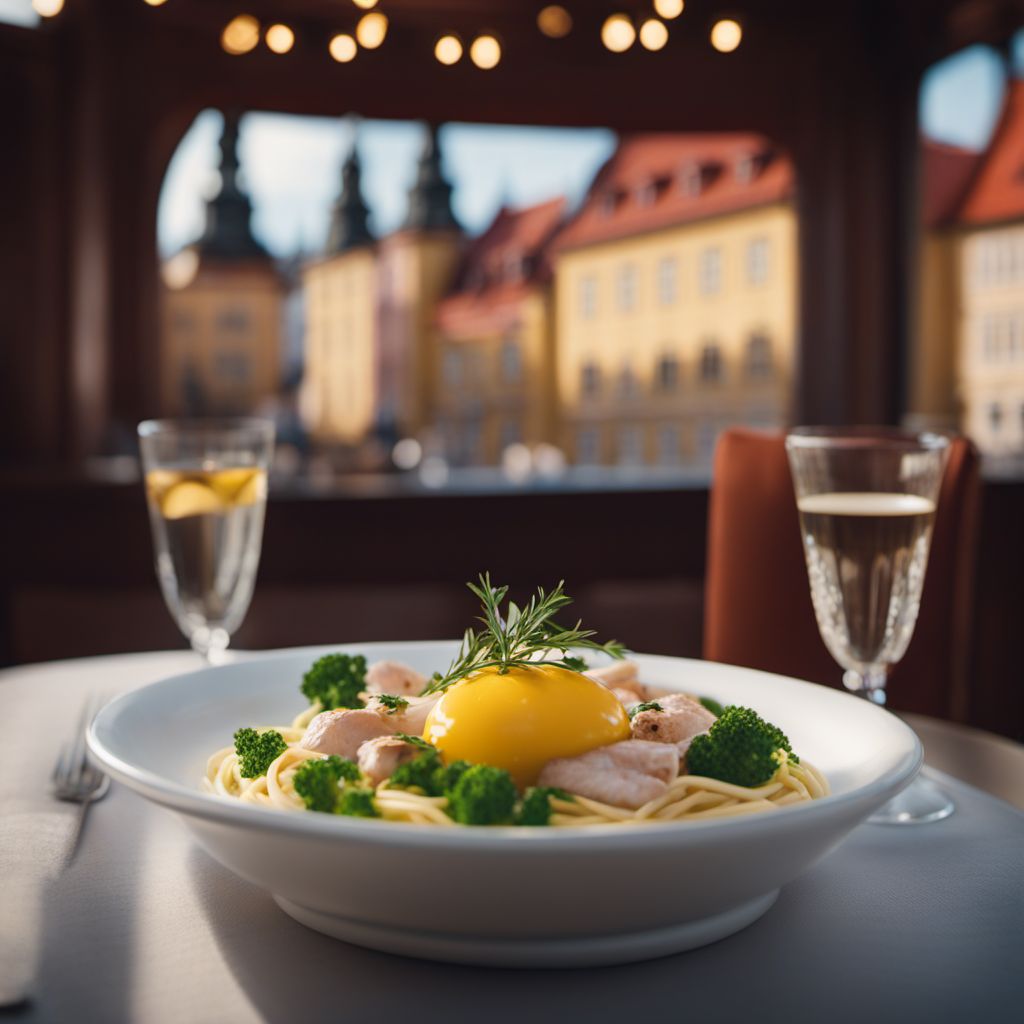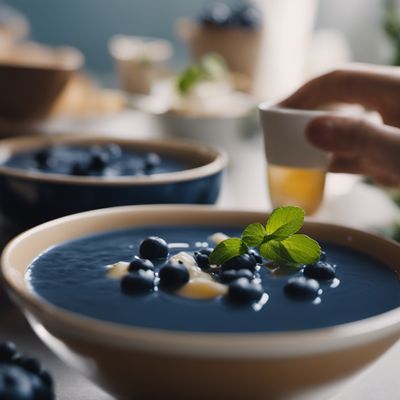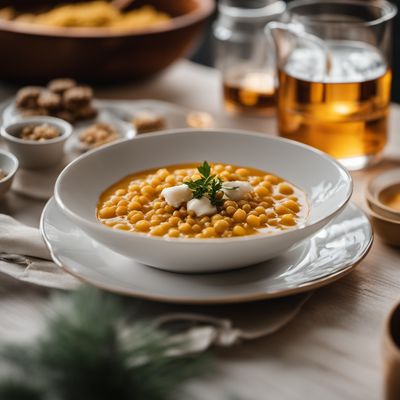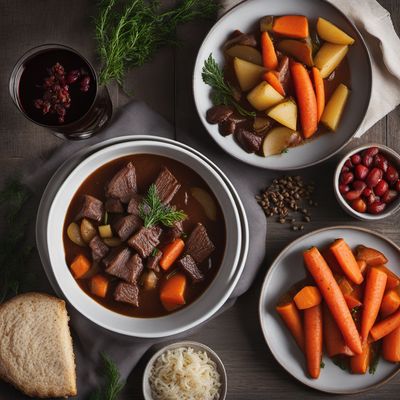
Cuisine
Swedish cuisine
Swedish cuisine is heavily influenced by the country's geography and climate. The long coastline and cold waters of the North Atlantic provide an abundance of seafood, while the harsh winters and short growing season make fresh produce scarce. Traditional dishes include meatballs, gravlax (cured salmon), and surströmming (fermented herring). Modern Swedish cuisine has been influenced by international trends, but still emphasizes local and seasonal ingredients.
Typical ingredients
Fish (salmon, herring), Potatoes, Root vegetables (carrots, turnips, parsnips), Game meats (elk, reindeer), Dairy products (cheese, butter), Berries (lingonberries, cloudberries), Herbs (dill, parsley)
Presentation and garnishing
Swedish cuisine is often presented in a simple and elegant manner, with an emphasis on natural flavors and textures. Garnishes are typically minimal, with fresh herbs or berries used sparingly.
Swedish cuisine has gained international recognition in recent years, with several Swedish restaurants receiving Michelin stars. The New Nordic cuisine movement, which emphasizes local and sustainable ingredients, has also helped to raise the profile of Swedish cuisine.
More cuisines from this region...
Norwegian cuisine, Icelandic cuisine, Finnish cuisine, Danish cuisine, Sami cuisine
History
Swedish cuisine has a long history dating back to the Viking era. The harsh climate and limited resources forced early Swedes to be creative with their cooking, resulting in dishes like pickled herring that could be stored for long periods of time. In the 18th and 19th centuries, Swedish cuisine was heavily influenced by French cuisine, as many Swedish chefs trained in France. Today, Swedish cuisine is a blend of traditional and modern influences.
Cultural significance
Swedish cuisine is an important part of the country's cultural heritage. Traditional dishes are often served on special occasions and holidays, and many families have their own recipes that have been passed down for generations. The use of local and seasonal ingredients is also an important aspect of Swedish cuisine.
Health benefits and considerations
Seafood is a good source of omega-3 fatty acids, which are important for heart health. However, some traditional Swedish dishes are high in salt and fat, so should be consumed in moderation.
Swedish cuisine dishes Browse all »

Skånsk äppelkaka
Skanskaeppelkaka
Skånsk äppelkaka is a traditional Swedish apple cake that is made with fresh apples and cinnamon. It is a simple and delicious dessert that is perfect for serving with coffee or tea.

Blåbärssoppa
Blueberry soup
Blåbärssoppa, also known as Swedish blueberry soup, is a traditional Scandinavian dessert soup made with blueberries, water, sugar, and cinnamon. It is typically served cold...

Gubbröra
Gubbröra is a traditional Swedish dish that is typically served as an appetizer or side dish. It is a delicious and healthy dish that is perfect for any occasion.

Klappgröt
Klappgröt is a traditional Swedish dish made with barley and milk. It is a hearty and flavorful dish that is perfect for cold winter days.

Jordgubbstårta
Strawberry Cake
Jordgubbstårta is a Swedish dessert that translates to "strawberry cake" in English. It is a popular summer dessert that is light, refreshing, and perfect for any occasion.

Kalops
Swedish Beef Stew
Kalops is a traditional Swedish beef stew that is slow-cooked with root vegetables and spices. It is a hearty and comforting dish that is perfect for cold winter nights.

Kåldolmar
Stuffed cabbage rolls
Kåldolmar is a traditional Swedish dish that is typically served as a main course. The dish consists of cabbage leaves that are stuffed with a mixture of ground beef, rice, and...

Palt
Palt is a traditional Swedish dish made with boiled potatoes and flour, usually served with lingonberry jam and butter.
Swedish cuisine recipes Browse all »

Swedish Yellow Pea Soup
Golden Delight: A Hearty Swedish Yellow Pea Soup

Swedish-style Cod Canapés
Nordic Delights: Swedish-inspired Cod Canapés

Swedish Gubbröra with a Twist
Savory Swedish Delight: Gubbröra Reinvented

Princess Cake with a Twist
Enchanting Delight: A Modern Twist on the Swedish Princess Cake

Swedish Äggost with Lingonberry Sauce
Velvety Äggost Delight with a Tangy Lingonberry Twist

Swedish-inspired Lingonberry Gelato
Nordic Delight: Lingonberry Gelato with a Swedish Twist

Swedish Beef Stew with Root Vegetables
Hearty Nordic Delight: Swedish Beef Stew with Root Vegetables

Upplandskubb with Lingonberry Sauce
Savory Swedish Potato Dumplings with Tangy Lingonberry Sauce

Swedish-inspired Spiced Meatballs with Lingonberry Sauce
Savory Swedish Delight: Spiced Meatballs with Lingonberry Sauce

Västerbotten Cheese Tart
Savory Delight: Västerbotten Cheese Tart

Swedish Almond Cakes
Scrumptious Almond Delights: A Swedish Culinary Delight

Skånsk Apple Cake
Autumn Delight: Skånsk Apple Cake